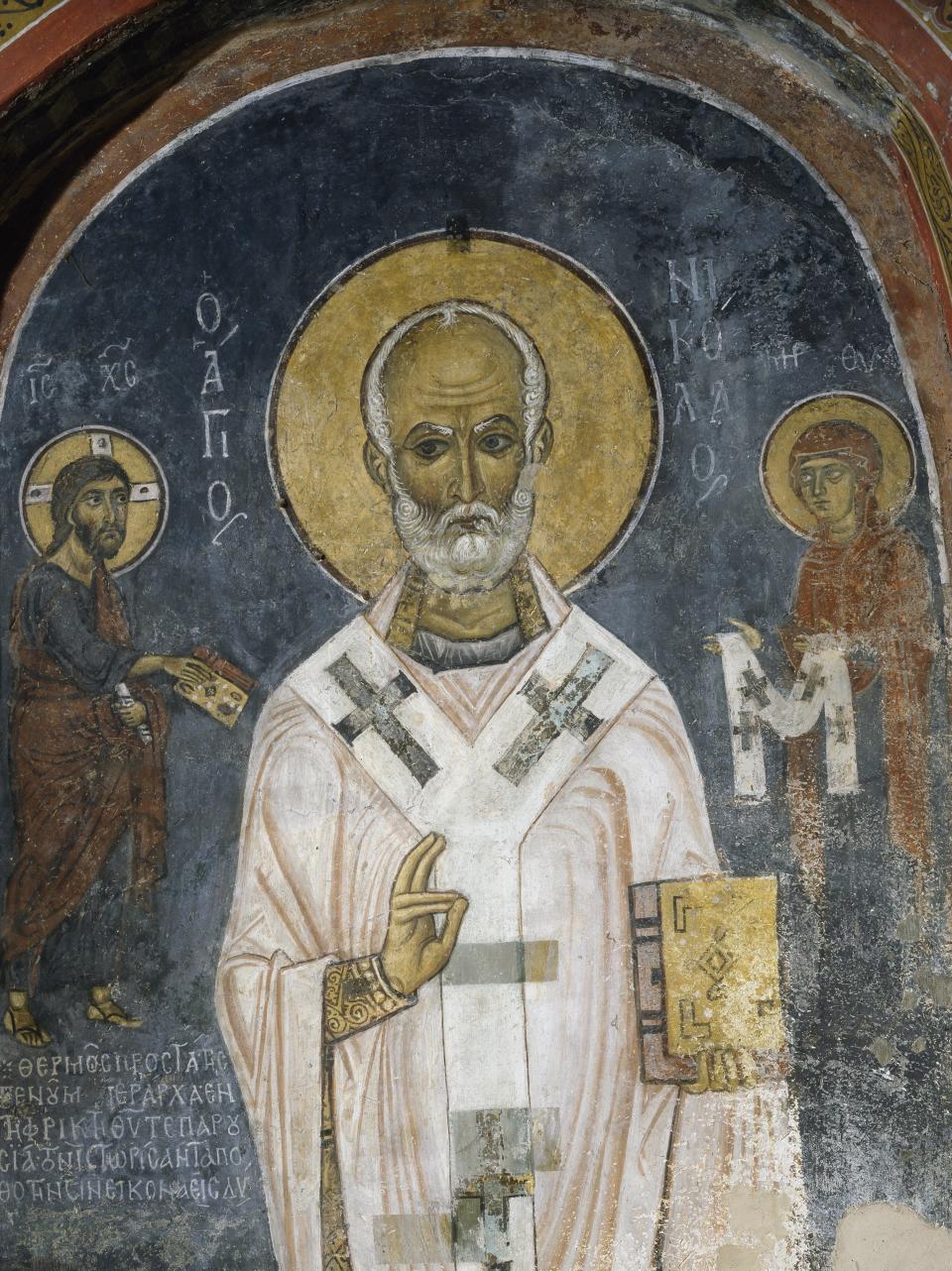Oxford Researchers Make Startling Discovery About Ancient St. Nicholas Relic
A post shared by Dr Georges Kazan (@drgeorgeskazan)on Dec 5, 2017 at 4:56pm PST
Researchers at Oxford University have used modern scientific technology to test a religious relic believed to belong to St. Nicholas, the fourth-century Christian bishop whose generosity inspired the legend of Santa Claus.
Tom Higham and Georges Kazan, directors of theOxford Relics Cluster, used radiocarbon dating to investigate a pelvic bone fragment thought to belong to the saint. The tests showed that the bone fragment dates to the fourth century ― the period when some historians believe St. Nicholas died.
Higham, a professor who works with Kazan and others at Oxford toapply scientific techniques to the study of relics, told HuffPost that it’s rare for relics to date back to the time period matching when a saint is believed to have died. He estimated that only one of every 20 relics he’s encountered stands up to this kind of scientific scrutiny. It’s much more likely for the relics to come from a somewhat later historical period.
But this bone fragment appears to have defied the team’s expectations, suggesting apossibility the bones may have belonged to St. Nicholas himself.
“We are always surprised when, despite all of the possible opportunities for material to be lost or replaced by something else, that the age we measure for relics such as these come out to be the same age as historically attested,” Higham told HuffPost in an email. “It doesn’t always happen. In this case the date we measured in the laboratory overlapped perfectly with the age expected for St. Nicholas.”

Christian religious relics are physical objects that have an association with a saint or with Jesus Christ. They can be fragments of a human body, pieces of something the saint owned ― a shirt or a book ― or something the saint touched.In the Catholic tradition, relics are believed to be vehicles through which God brings healing and works miracles. As a result, relics are often kept in churches and “venerated” by the faithful, who come to touch, kiss, or pray next to these sacred objects.
St. Nicholasis believed to have lived in the fourth century in Myra, Asia Minor, an area now part of modern-day Turkey. Legends about the bishop paint him as a generous soul who gave freely to the poor.
He was buried in Myra, but in 1087, his remains were apparently stolen and transported to Bari, Italy. His relics are still buried in a crypt at the Basilica San Nicola in Bari.
After the Protestant Reformation, devotion to the saint remained strong in Holland, where he was known in Dutch as Sinterklaas. His myth was eventually tangled with Nordic folk tales of a magician who punished bad children and rewarded good children with gifts.
The legend crossed the Atlantic with Dutch colonists in the 17th century. Sinterklaas was eventually adopted by America’s English speakers as Santa Claus and became known as the jolly, generous fellow who presented children with gifts at Christmastime.
While most of St. Nicholas’ relics remain in Bari, pieces associated with the saint have dispersed to other regions of the world. Other parts are at the Chiesa di San Nicolo al Lido in Venice, Italy.

The bone that the Oxford researchers analyzed came from Lyon in France, and is now owned by the Rev. Dennis O’Neill, a Catholic priest in the Chicago area who collects Christian relics.
The Oxford researchers’ interest in O’Neill’s collection was piqued when they heard that the pelvic bone fragment owned by the Chicago priest is from the left pubis (the lower part of the bone), while the remains in Bari only have the left ilium (from the upper part of the bone). This suggested both fragments could potentially belong to the same person.
Higham said his team is now seeking to study the relics held in Bari, to see if the Chicago bone can be linked to that skeletal material and DNA. In the future, they’re hoping to use palaeogenomics and stable isotope analysis to figure out the deceased’s gender, age at time of death, and the geographic area in which the person lived.
“With science we can’t definitively prove it is [St. Nicholas], only that it is not, but we are aiming to continue with our work on other bones from the saint to see whether we can link this bone and others genetically,” Higham said.
This article originally appeared on HuffPost.
